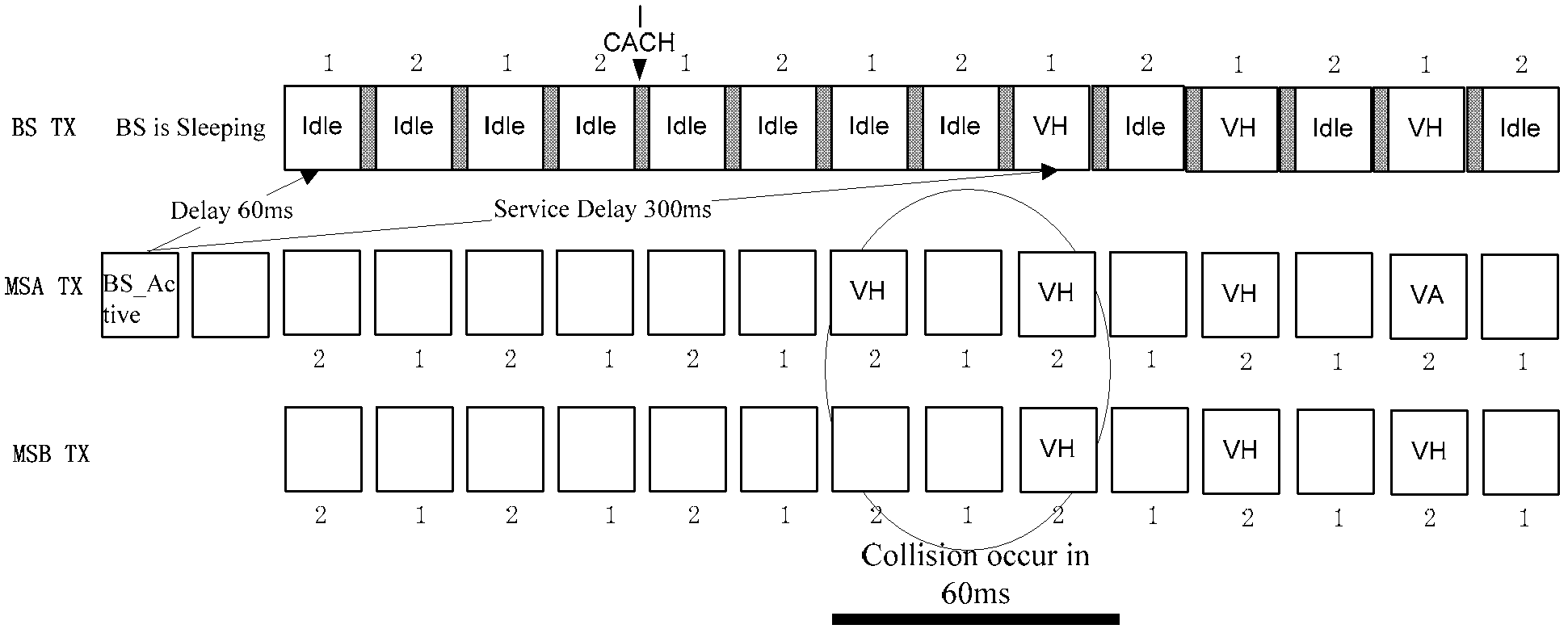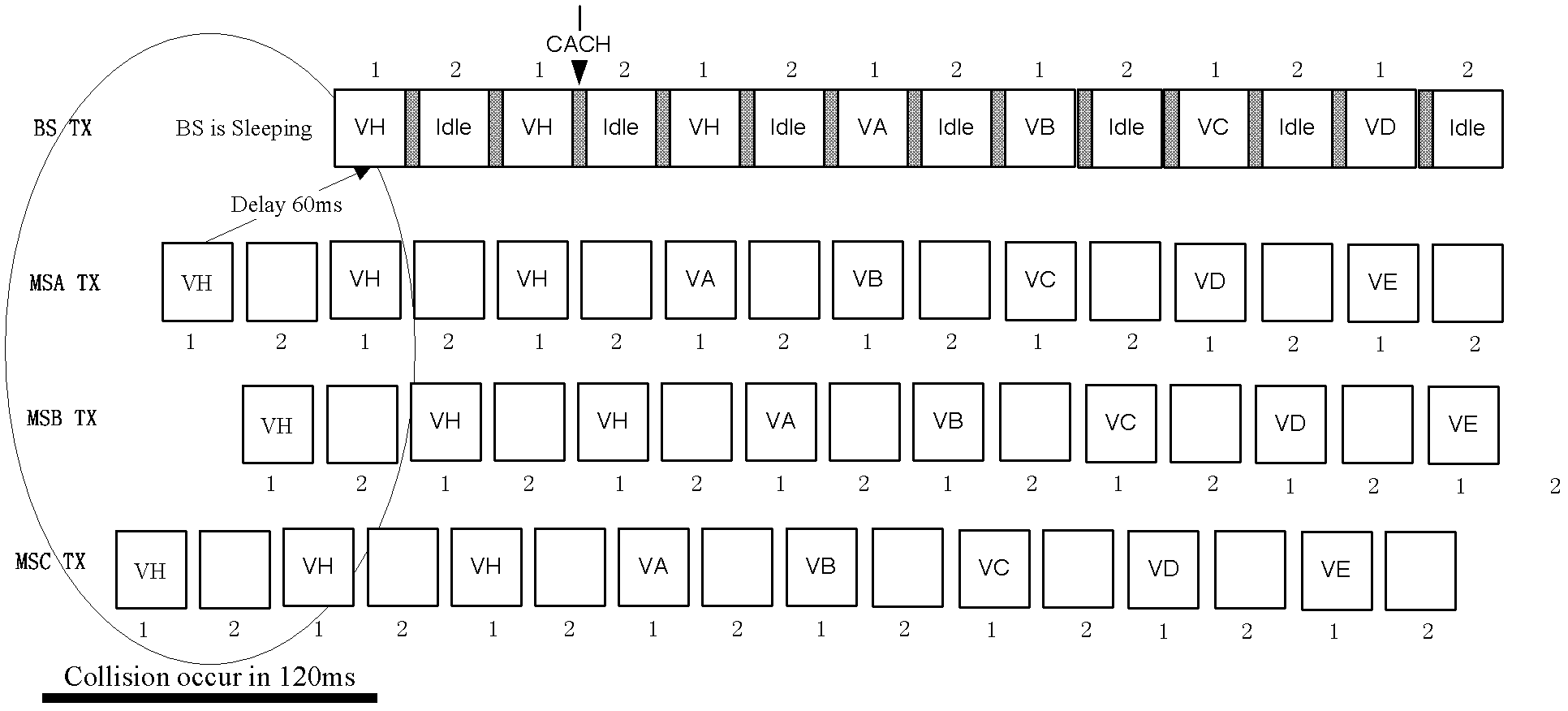Call collision processing method, terminal and transfer platform
A technology for processing calls and terminals, applied in the field of communications, can solve the problems of forwarding, call loss, and reduce user experience, and achieve the effect of resolving call conflicts
- Summary
- Abstract
- Description
- Claims
- Application Information
AI Technical Summary
Problems solved by technology
Method used
Image
Examples
Embodiment 1
[0072] see Figure 4 , which shows a flow chart of Embodiment 1 of the method for handling call conflicts in the embodiment of the present invention, which may include:
[0073] Step 101, the terminal sends an access request to the relay station, and the access request includes a preset number of access request bursts.
[0074] The technical solution of the present invention is mainly aimed at the time division multiple access communication system, and the terminal can be embodied as a device supporting time division multiple access communication technology such as a walkie-talkie, a smart phone, etc. The implementation process of the present invention will be explained below by taking the walkie-talkie as an example.
[0075] A user may initiate a voice call, a short message call, or a signaling call through the walkie-talkie, wherein the short message call and the signaling call may be collectively referred to as a data call. For voice calls and data calls, the access reque...
Embodiment 2
[0102] see Figure 8 , which shows a flow chart of Embodiment 2 of the method for handling call conflicts in the embodiment of the present invention, which may include:
[0103] Step 201, the terminal sends an access request to the relay station, and the access request includes a preset number of access request bursts.
[0104] Step 202, the terminal monitors the channel status of the repeater, and judges whether the repeater has relayed the access request burst of the terminal within a preset monitoring time.
[0105] Step 203, if the repeater relays the access request bursts of the terminal at least twice consecutively within the preset monitoring time, the terminal continues to send subsequent bursts to the repeater.
[0106] Step 204, if the repeater relays the access request bursts of other terminals at least twice consecutively within the preset monitoring time, the terminal stops sending subsequent bursts to the repeater.
[0107] Steps 201-204 are the same as steps 101...
Embodiment 3
[0119] see Figure 9 , which shows a flow chart of Embodiment 3 of the method for handling call conflicts in the embodiment of the present invention, which may include:
[0120] Step 301, the terminal sends an access request to the relay station, and the access request includes a preset number of access request bursts.
[0121] Step 302, the terminal monitors the channel status of the repeater, and judges whether the repeater has relayed the access request burst of the terminal within a preset monitoring time.
[0122] Step 303, if the repeater relays the access request bursts of the terminal at least twice consecutively within the preset monitoring time, the terminal continues to send subsequent bursts to the repeater.
[0123] Step 304, if the repeater relays the access request bursts of other terminals at least twice consecutively within the preset monitoring time, the terminal stops sending subsequent bursts to the repeater.
[0124] Steps 301-304 are the same as steps 1...
PUM
 Login to View More
Login to View More Abstract
Description
Claims
Application Information
 Login to View More
Login to View More - R&D
- Intellectual Property
- Life Sciences
- Materials
- Tech Scout
- Unparalleled Data Quality
- Higher Quality Content
- 60% Fewer Hallucinations
Browse by: Latest US Patents, China's latest patents, Technical Efficacy Thesaurus, Application Domain, Technology Topic, Popular Technical Reports.
© 2025 PatSnap. All rights reserved.Legal|Privacy policy|Modern Slavery Act Transparency Statement|Sitemap|About US| Contact US: help@patsnap.com



